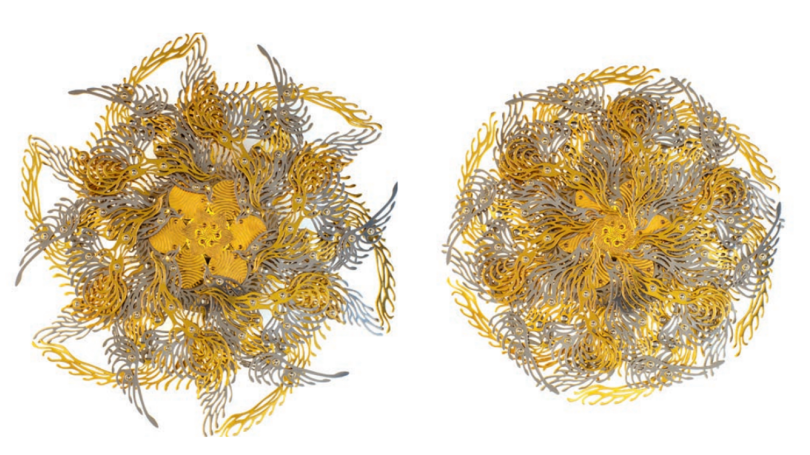HAELY CHANG, Jane and Raphael Bernstein Associate Curator of East Asian Art
Hood Quarterly, fall 2024
Gold Cakra Lamp comes to life through dynamic movement and light. When one approaches it, the artwork unfurls its gears and extends its wheel. Emitting a luminous glow from its central axis, the wheel projects a radiant wave that envelops its surroundings. In the presence of this work, time appears to pause, allowing the viewer a moment of serene reflection.
The Gold Cakra Lamp is one of Choe U-Ram's "anima machines," a series of kinetic sculptures that reflect his sophisticated designs and extraordinary imagination. Choe demonstrates both artisanal and engineering skills in creating these machines from scratch, assembling metal parts to form their skin, connecting electricity to serve as their lifeblood, and structuring their rhythmic movements to emulate breathing. Paradoxically, Choe's objective is not to control these machines but to set them free. He perceives his creations as living organisms with their own life cycles, histories, and myths. Unlike conventional machines that serve human needs, Choe's anima machines exist autonomously among people, fostering a communal relationship between humans and non-humans.
It is no coincidence that Choe chose the Cakra as a motif for his work. The term, derived from Sanskrit chakra, encompasses the notion of "wheel," the basis of many machines' movement. In Buddhist philosophy, in turn, its circular movement has evolved into a symbol of wisdom and enlightenment. The concept informing Cakra therefore illustrates how objects can transcend their utilitarian functions to become subjects of contemplation.
The anima machine challenges the distinction between the artificial and the natural. At a time when machines are increasingly implicated in everyday life and even possess their own voices and intelligence, Choe's creations embrace the possibility of a human partnership with this new class of entity.
Choe U-Ram's Gold Cakra Lamp will be on view in Attitude of Coexistence: Non-Humans in East Asain Art, on view at the Hood Museum, November 16, 2024–June 29, 2025.
